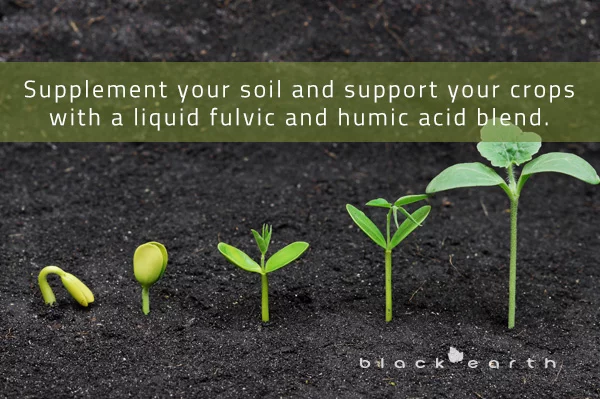Over the past decade and a half, there has been a revolutionary shift in how soil scientists are approaching their discipline, particularly with respect to soil fertility for row crops. While the details of their hypotheses are still in flux, the broad strokes are clearly in place.

Namely, we must shift our view on the topic of soil fertility: from a view that took the soil as a substrate – or sponge – that absorbs fertility enhancers (and pesticides, herbicides, etc.), to a living eco-system; this living eco-system is a balanced interplay between mineral availability, organic matter (including microbes and other forms of soil based life), and supplemental nutrients to generate the most productive soil possible.
Components of Quality Soil
Black Earth believes that developing a more holistic approach to soil fertility should take into account four specific facets. Specifically, understanding soil Organics, Structure, Chemistry and Nutrient availability are all essential components to categorize what makes up a quality soil. With the rise of Intensified Agriculture, active management of these four components is going to be crucial for consistent yields and sustained production.
Soil Organics
Soil Organic Matter is the component of the soil consisting of various plant and animal residues at differing stages of decomposition. Additionally, the cells and tissues of soil organisms, and the substances synthesized by these soil organisms (arthropods, nematodes and beneficial fungi, etc.) are all components of Soil Organics.
Soil Structure
Soil structure is the arrangement of soil separates into units called soil aggregates. An Aggregate possesses solids such as; clay, silt and sand particles. As a result of various soil structures, there are varying soil textures, and different performance conditions. These conditions can be aeration, water infiltration and retention, as well as resistance to erosion
Soil Chemistry
Soil chemistry is the evaluation of the chemical characteristics of soil. This is affected by its mineral composition, environmental factors and types of organic matter. A few of the measurable parameters are the soils pH, sodium absorption ratio, and cation exchange capacity
Soil Nutrient Availability
Soil nutrient availability is a combination of its direct fertility in terms of Macro and Micro nutrient levels, but also its ability to withhold those nutrients. This ties in with soil chemistry as many of these nutrients are only available in specific pH ranges
Intensified Agriculture
Our mission is about building Quality Soils for our customers. Our range of products can help you by Boosting your Soil Organics, Building your Soil Structure, Stabilizing your Soil Chemistry and Enhancing your Soils Nutrient Availability. Through a more holistic and organic approach to soil management; Farmers can reduce their reliance on conventional crop inputs and start building more resilient and healthy soils.
